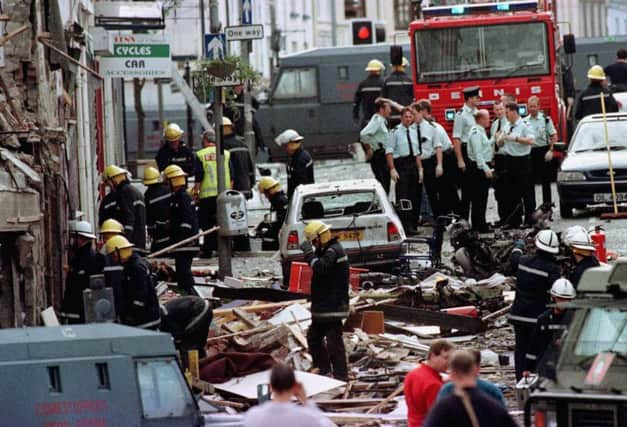Witnesses to horror... Omagh victims return after 20 years


A bomb on a busy shopping street in Omagh killed 29 people, including a woman pregnant with twins. Yet it came four months after the signatures of Tony Blair and Bertie Ahern on the Good Friday Agreement had promised an end to the bloodshed.
Oliver Barker was just four when the blast killed his 12-year-old brother, James.
Advertisement
Hide AdAdvertisement
Hide AdOn the eve of the 20th anniversary of an outrage that threatened to blow apart the fragile peace of the province, Mr Barker returned from his new home in Surrey to his childhood haunt.
“I was able to revisit it with my mother,” he said. “And for us, and indeed for myself, it was an experience that was hugely cathartic.
“It allowed me to walk the streets that so many years ago had been obliterated in what was an event that would change the lives of everybody involved.”
It was on the afternoon of August 15, 1998, on the final day of Omagh’s carnival, that a car bomb containing 500lbs of explosives was detonated by the Real IRA, a splinter group formed to continue the “armed struggle” after the organisation’s political wing, Sinn Féin, had lent its support to the peace process that would culminate on Good Friday.
Advertisement
Hide AdAdvertisement
Hide AdThe rebels saw its action as a betrayal of the republican ideal.
The victims that day came from both sides of the Irish border, from England and from Spain. No-one was ever convicted of murder.
Yet, said Mr Barker, there must be someone harbouring the missing information.
“The names, the places, the times. So that the criminal justice system can run its course and so the families could get the justice that they need.”
Advertisement
Hide AdAdvertisement
Hide AdOne of the first firefighters to respond to the bombing recalled that he and his colleagues were stunned into silence by what they were seeing.
“I had friends coming up to me saying, ‘Paddy, I can’t find my wife’, ‘I can’t find my children’,” said Paddy Quinn, then a part-time firefighter and now Watch Commander at Omagh.
“You hear people on TV saying they will never forget some of the things that happened in Northern Ireland, I used to think surely you eventually could, but that day, one of my thoughts was, I know now why people can’t forgive,” he said.
At the Tyrone County Hospital, Sister Joann McCullagh, then a staff nurse, remembers the day as the darkest of her life.
Advertisement
Hide AdAdvertisement
Hide Ad“One of my memories was Mr Pinto [a surgeon] asking me to get a priest. At the bottom of the stairs, there were hundreds of people, roaring, shouting, crying, screaming for loved ones.
“I recall seeing a priest, I remember reaching over this mass of people dragging him up the stairs.”
Comment: Page 12.